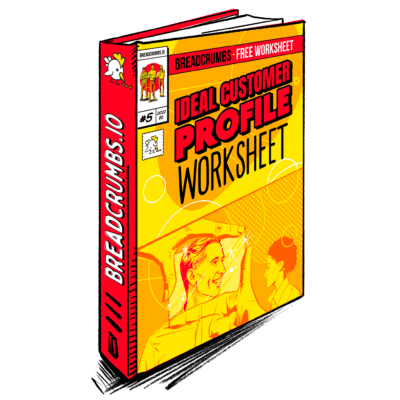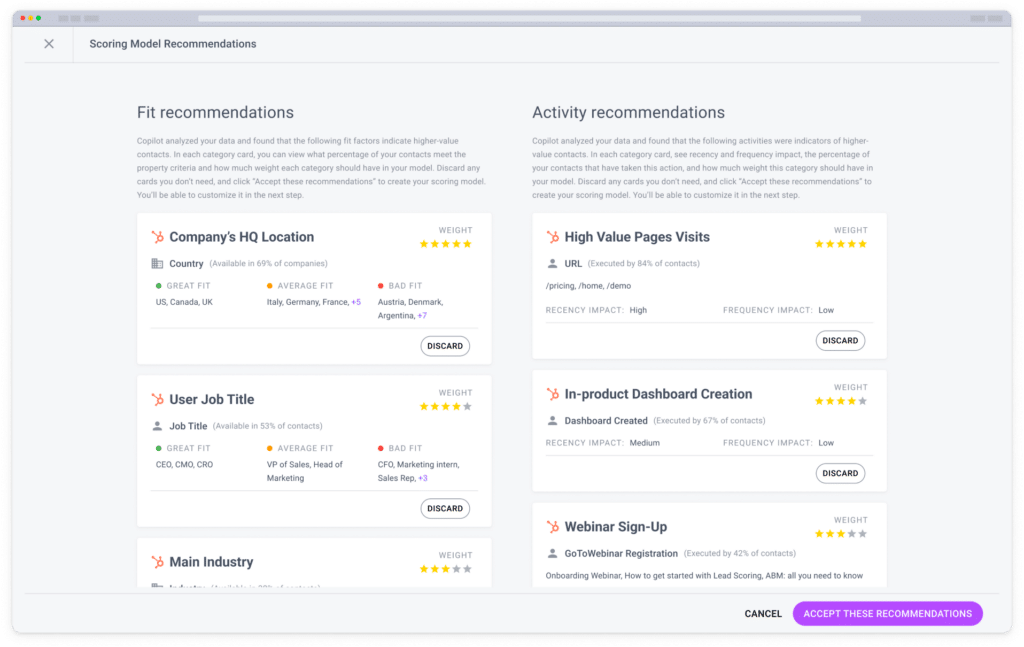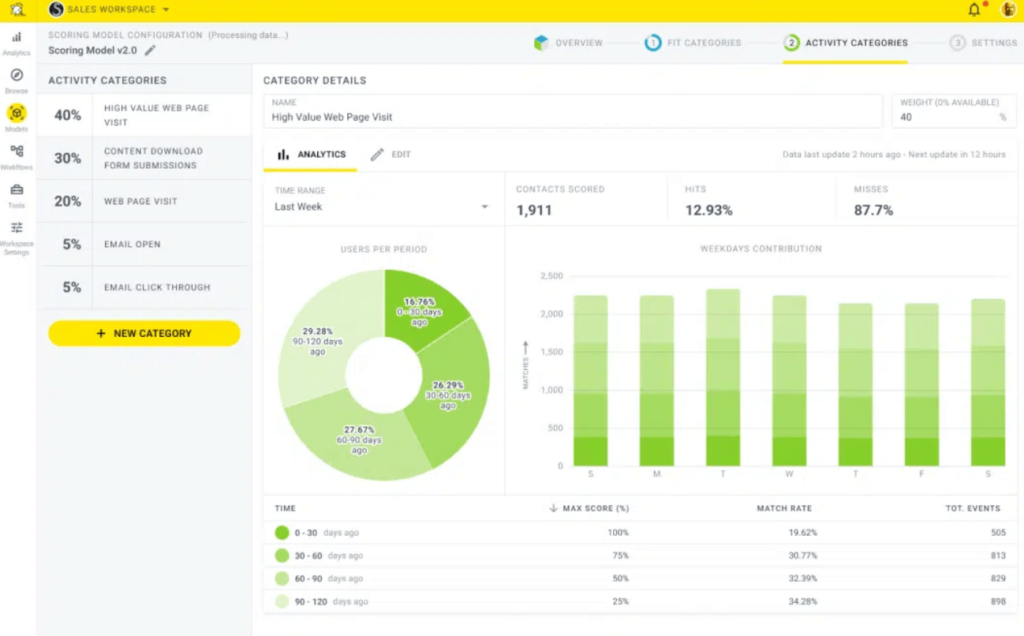Account-based marketing is typically defined as a strategic approach to business marketing based on account awareness. These accounts (or organizations) consider and communicate with individual prospects or customer accounts.
However, account-based marketing is best for enterprise-level sales organizations rather than smaller business accounts. This guide will cover what account-based marketing campaigns entail, the risk vs. reward, and the critical questions you should ask yourself before starting.
We will help you quickly verify if account-based marketing is the right strategy for you and your B2B marketing to have in place and, as a result, boost your conversion rates.
What you can expect to get out of this guide…
What is Account-Based Marketing?
First, we must address the basics by addressing the question: What exactly is account-based marketing?
Account-based marketing can be defined as a business-to-business (also known as B2B) marketing strategy that employs an account-level focus used by sales teams for targeted account selling.
While this is entirely true, there’s so much more to know about account-based marketing and how to implement that information with those strategies and tactics.
Account-based marketing uses personalized marketing and sales efforts on a focused set of strategic accounts. Essentially, ABM inverts the standard demand generation process.
While demand generation starts by creating the content and messaging before distributing it among the relevant channels, account-based marketing begins with the target already in mind, or “the who.” Account-based marketing focuses on which accounts will most likely become their best-fit customers.
As a marketer, once you have identified your target accounts, you can create highly personalized content relevant to those accounts you’ve targeted and select the proper channels and strategies to reach the right people or persona within those accounts.
You can enable users to generate highly qualified leads, craft personalized buying journeys, and increase customer lifetime value by building further opportunities for in-pipeline accounts. ABM benefits include allowing users to combine their prospect data with real-time customer experience technologies to facilitate an account-based marketing strategy.
This guide will clarify and elaborate on the steps and strategies involved in account-based marketing.
Looking for more ways to speed up your revenue? Implementing the Revenue Acceleration Process when working with account-based marketing is critical. Check out our Revenue Acceleration Manifesto.
Why You Need Account-Based Marketing
One significant benefit to choosing account-based marketing is the synchronicity it creates between your marketing and sales teams. When both sales and marketing focus on the account itself, aligning their messaging is much easier.
Account-based marketing is a strategy that makes it more accessible to help all marketers form higher-quality relationships with accounts before they move into sales. Account-based marketing also aims to create a zero-waste marketing system by focusing on quality over quantity, thus creating a pipeline filled with high-quality account leads.
These leads are nurtured with personalized campaigns and lead to high-quality customer relationships. The ABM approach can also identify up-sell or cross-sell opportunities and outline those who might be a risk.
Account-based marketing is not for everyone. However, your campaigns’ results can be phenomenal when you follow the steps correctly.
First, we will highlight some benefits of using and utilizing account-based marketing.
4 Key Benefits of ABM Management.
- Synchronizing your sales and marketing: Account-Based Marketing (ABM) requires the marketing and sales teams to collaborate to create meaningful content and experiences for your target accounts.
- Targeted marketing efforts: Your marketing efforts will be laser-focused on high-value accounts. We like to think of this as quality over quantity. You will waste less time chasing unproductive leads and more time closing deals. This is especially helpful in cases where you may need one big deal to make it through the rest of your year.
- Shorter Sales Cycles: The typical B2B cycle involves multiple stakeholders, often slowing down the sales cycle. With account-based marketing, you focus on nurturing the key decision-makers within the account. This allows you to speed up your sales cycles.
- More efficient use of marketing dollars: The adage you need to spend money to make money is relevant here. While ABM can become more costly than other forms of marketing upfront, It is worth its weight in returns. This is due mainly to the hyper-targeted nature of this approach, which you can use to maximize the value of your largest accounts via upselling and cross-selling.
6 Crucial ABM Tactics and Strategies
The critical thing to remember about account-based marketing is that it thrives on personalization and relevance. Now that we’ve covered the basic steps to identifying and marketing your target, you might ask what strategies and tactics would be best to implement.

Ebook
Ideal Customer Profile (ICP) Worksheet
Learn how to create an Ideal Customer Profile and build a successful sales strategy with this Ideal Customer Profile (ICP) Worksheet.
How do we start? Where do we go from here? To help you with that, we’ve put together some account-based marketing best practices and strategies below for you and your team to consider implementing to achieve your personalization and relevance goals.
1. Create account-specific offers
One of the most crucial account-based marketing tactics is one of the most straightforward: secure organizational ABM alignment.
This often means getting all internal stakeholders on board with the various factors of your account-based marketing strategy rather than creating general content intended for a wider audience and building content that hones in on your target accounts’ specific concerns.
Doing this will make it easier for your business to create consistent experiences for these target accounts. Take the time to research what stakeholders need and build content that speaks directly to those needs.
Make sure your strategy is as streamlined and efficient as possible.
2. Create deals aimed at securing a meeting
Create deals or offers aimed at your target to get your foot in the door.
For instance, if you work in a web design or marketing agency, you can send your prospect or target account a short video or a summary of your team’s analysis of their website. This will include information from your findings, such as its strengths, weaknesses, and the data on how it’s performing against the competition.
Suppose your research has indicated that conversion is a pain point or concern for your target account. In that case, you’ll want to consider offering to show them what the best companies in their industry are doing to reach their own conversion goals.
3. Use remarketing to your advantage
First, what is remarketing? Remarketing (often used interchangeably with “retargeting”), in short, is the process of serving up several targeted ads to leads or customers who have already interacted with content on your site but did not result in a conversion. It’s essentially a method for connecting your product or service with people who have already visited your site or mobile app.
Remarketing, however, is generally an approach that is about re-engaging customers via emails, while retargeting usually refers to third-party online ads that target users who have interacted with your site without purchasing.
Serving up cookies: With remarketing, you use a tracking cookie placed in the user’s browser. The cookie then notifies the remarketing platform of which type of ad to serve to the user based on specific pages or content they viewed or perhaps engaged with on your business’s app or website.
4. Leverage social media data
Leveraging your social media or social intelligence data is critical in account-based marketing. What’s often termed social listening is an essential piece of information when addressing the audience. Social listening is when companies monitor, analyze, and respond to social media conversations about their brand, products, services, etc.
A well-assembled social listening strategy will give valuable insights into your target accounts’ thought processes. Applying the social listening strategy should allow you to redirect your message or restructure your offers based on the information you’ve gathered from these interactions.
By monitoring your target’s social posting, you can gather much information about your target without conversing directly with them. Most people tend to post about their pain points and challenges, which gives you, as a marketer, the opportunity to deliver your content at the right time.
In addition to monitoring, you can search contacts on social media. For example, Twitter has the most advanced users search engine that allows to find anyone on X.
First, it helps to start with simple practices like liking, commenting, sharing, getting your target accounts’ attention, and letting them know you’re engaged. These steps will generally increase your credibility with your prospect by the time you reach out to start a conversation.
"One of the most valuable tools I've used is the list-building feature on Twitter. [...] Create a list in your Twitter account, add the usernames of your target accounts and the decision-makers at those accounts, and then monitor what they're sharing. Find out what type of content they tend to interact with (blog posts, infographics, videos, etc.) and then develop content based on your findings." (source)
Social media interactions will create a more personalized engagement later in the sales cycle. Please take a moment to ensure you’re utilizing the direct messaging option when engaging with your target, as it is one of the best ways to get yourself noticed early on in the process.
Remember: There are right ways to start a direct message chat, and then there are those that will be more like grating than appealing.
Don’t be the guy who automatically sends a cheesy and obvious pitch when someone follows you. These aggressive and cheesy pitches tend to be more annoying than transparent and will more often result in the exact opposite of what you are trying to accomplish.
5. Personalize your prospects’ experiences on your website
Since we’ve already talked about cookies and social media data in the previous strategies, another great idea would be to provide your target accounts with a user-customized experience on your website to increase engagement and boost your conversion rates.
Consider creating landing pages with custom images, copy, offers, or pricing specific to the account that’s browsing your website. Data you can use for website personalization include:
- Behavioral data: This would be your target’s activity, like how a prospect behaves on your app or website.
- Contextual data: Things like which browser was used, the type of device, and its location.
- Firmographics: Your target’s company data, such as company name, industry, revenue, or stage in the buying cycle.
- Demographics: Such as name, email address, work title, and location.
Pro Tip: Consider sending personalized gifts. You might want to delight your prospects by sending gifts specifically for them instead of the standard company-branded items.
Remember: think outside the box and develop something your target accounts will be pleased to receive that will stick in their memories.
6. Leverage account-based scoring
Account-based scoring, in the realm of lead scoring, goes beyond the traditional method of evaluating individual leads. Instead, it assesses and ranks entire accounts (including multiple contacts or leads within a single company) based on their potential value and likelihood of converting into customers.

This approach aligns particularly well with the ABM strategy, which focuses on targeting high-value accounts rather than individual leads (which means more contacts to keep track of).
In ABM, where marketing efforts are laser-focused on key accounts, knowing which accounts to prioritize (and when to strike) is crucial.
By scoring accounts, companies can allocate their resources more effectively, concentrating on accounts with the highest potential. It’s about investing effort where it’s most likely to yield results.
Using an ABM approach to lead scoring also creates a unified approach between marketing and sales teams, as both focus on the same high-potential accounts. Tailored marketing strategies can be developed based on the score, leading to a more personalized and relevant experience. Sales reps can follow up using similar messaging and add in even more pitch personalization to the mix.
If you want to go with this approach, you’ll need to make sure you have account-based marketing tools and software (like Breadcrumbs) that can support it.
Case Study: What You Can Achieve with Account-Based Marketing
If you’re still fuzzy about account-based marketing, we have a perfect account based marketing example from GumGum‘s CMO, Ben Plomion. Ben Plomion shared an article on 3 Crazy ABM Campaigns that actually worked. One of the examples outlined their efforts to land T-Mobile.
This story is a little crazy, and the approach is wild, but it is a perfect example of how highly targeted account-based marketing campaigns can be high-risk but successful! This fantastic approach actually worked!

Ben Plomion outlined in his shared blog that;
“T-Mobile CEO John Legere is incredibly active on social media. Those who scroll through his Twitter feed will quickly realize a few things: He supports his company as often as he can, likes to wear the color magenta, and loves Batman.”

Ben Plomion and his team at GumGum decided with that information to take action and roll out a wild plan while T-Mobile was unrolling its own unlimited plan; he recalls further,
“We wanted them to see how valuable our computer vision technology could be and highlight how the two of us could collaborate. But instead of going through the usual channels or sending a typical outbound email, we thought it would be smarter to go down a more personalized path. So we built a creative team of editors, writers, illustrators, and letterers who spent months making a comic book called T-Man and Gums.”
They distributed 100 copies of the finished comic to T-Mobile and its agencies of record (and you can even check out a copy for yourself to this day online), and within hours, the ball was rolling.
This ABM target followed through, and it’s safe to say the tactic worked and caught the former CEO. T-Mobile’s CEO at the time, John Legere, must have had a positive reception; the blog noted that he even announced his approval on his verified Twitter.

Just days after GumGum employed their targeted campaign, they met with T-Mobile. The ABM tactic was definitely a high risk, but it sparked a meaningful conversation that led to snaring the big fish that T-Mobile is as a client.
Are You Ready To Branch Into ABM? Start Here!
If you’re still unsure if account-based marketing is the right approach for you and your team, you might want to evaluate and consider the following before jumping into the deep end. With the investment cost, this can be a sink-or-swim opportunity, and you want to be sure to come out on top.
- Who is your target audience? Do you know your target? Does your target audience know who you are? Have you started building your accounts list from scratch? Do you already have data collected to use? If your target accounts don’t know who you are yet, it’s best to contact them instead of waiting for them to contact you.
- You will need to focus on content creation. Your goal will be to convert carefully selected accounts to their specific needs. This means your content should propel high conversion rates. You will need to assemble a team that can get that done.
- Are your sales and marketing teams assembled for alignment? Get everyone on the same page. It would be best to sit down with your marketing and sales teams to discuss your goals and what steps you will need to accomplish them. It may put off potential customers if one person from your team says one thing to a prospect and someone else says something that contradicts the strategy.
- Are you ready and willing to invest? Account-based marketing requires a more comprehensive approach compared to other marketing methods. You find your target accounts, research, create accurate representative profiles, create content tailored to their needs, devise an outreach strategy on marketing channels, and manage their engagements.
[BONUS] 6 Easy Steps To Implement ABM In Your Team

How does account-based marketing work, or how can you make it work for you and your team? There are a few necessary steps you can explore to implement the terms in account-based marketing.
1. Identify and define your strategic target accounts
While most marketers are already used to defining personas and people, account-based marketing isn’t about distinguishing between each individual so much as proper ABM management is about marketing to an entire organization or target stakeholders on an account. This is a critical distinction, and it will be what you must keep in mind if you want to start on the right foot.
First, you will want to determine the best accounts with the potential to generate the most profit for your company or organization. For instance, when searching out your targets, you should define the industry, the company size, the location, the annual revenue, possible upsell opportunities, the profit margin, and the ladder.
You want to look for the accounts yielding your business the highest long-term profits. It is precisely those types of accounts that you will want to zero in on.
You will also want to spread some focus on your prospect’s overall turnover and on any of the account’s more negative points that your product or service can and will want to address and presumably improve upon.
This process will likely consist of qualitative and quantitative research. This research consists of partnering up with the strategy leaders and customer-based employees. These very employees will be the ones who interact with the consumer. Your sales and customer success teams will be able to learn from their experiences while also working with the data you have to support these assumptions.

Ebook
Ideal Customer Profile (ICP) Worksheet
Learn how to create an Ideal Customer Profile and build a successful sales strategy with this Ideal Customer Profile (ICP) Worksheet.
The information you can gather from both the employees who work on the front line on prospects and customers is precious during this process. These people will know your leads and customers better than you. Having the data to back it up will ensure you’re heading in the right direction.
2. Put on your ‘thinking caps’ and find your target accounts
Next, it’s time to hunt with strategic thinkers within your sales team. Once you understand the broader makeup of the organizations you’re pursuing, you must find those that match. You then can dig in even deeper to determine who the key stakeholders of that organization are.
You can actively search for your target businesses based on the profile you built in the first implementation step. Check your information and databases for the companies that have already connected with you.
Once you’ve identified some ideal targets, you will learn more about how decisions are made at these target organizations. Determining who the decision-makers are and more about how these decisions are made are the key components of this step.
With account-based marketing, you are in a place where knowledge is power. Put your investigation glasses on, learn about these organizations’ intricate build, and start strategizing how you can influence each stakeholder.
Don’t forget, though, that it’s vital that you also look at your current customers. They already like you and are much more comfortable converting than businesses who don’t quite know who you are yet.
3. Get personal and get social by identifying with your key contacts
Remember, with proper ABM management, you always want to emphasize researching your target accounts to find the important parties of people you must connect with.
Use this time to put your investigational work on social intelligence to use with creative content that speaks directly to the stakeholders and organizations you’ve chosen to target. You research your target accounts to find the essential parties you need to connect with.
This allows you to understand these stakeholders’ specific ‘pain points,’ which you can utilize in your campaign to appeal to how you can solve them with your messaging and imagery.
Remember: One of the main highlights of account-based marketing is that it is personalized to these organizations, which is why your content will need to speak specifically to them.
Be sure to use social media platforms (like Twitter, LinkedIn, etc.) and get to know them. You will want to engage with them and make them aware of your presence. You can do this by commenting on their posts and using @mentions, which may capture their attention.
Tip: Work with your team to ensure your content is visually engaging and communicates the right messages to these key stakeholders.
4. Choose the best channels for you to direct your social media efforts
Your research and content may just as well be useless if you’re not promoting your campaigns creatively and, most importantly, leading them in the right places. You need to understand where these stakeholders spend their time online.
Generally, you’ll also want to cater to their state of mind when they’re on social media like Facebook, Twitter, Instagram, LinkedIn, and these days, even TikTok.
For example, say you are targeting someone within a graphic design organization; perhaps you know that these individuals spend time on Pinterest from your initial research, and you would follow up by spending your time marketing there and within similar channels.
Facebook, Instagram, and LinkedIn can be powerful platforms to target these stakeholders because you can run campaigns to appeal to specific organizations and titles within those organizations.

Like many of these platforms, Facebook has a tremendously detailed targeting menu and will allow you to select targeting based on the data you have for education, financial, event-based, relationships, work, interests, behaviors, etc.
5. Time to execute your account-based campaigns!
With the long (and sometimes seemingly tedious) prep work wrapped up and completed, it is finally time for you to run your campaign! Finally! (Whew!)
Don’t just let your content run wild, though! Something you want to keep in mind as you move forward is that since this marketing method is so targeted, it’s important not to overwhelm these prospects by bombarding them with repeat messages across multiple channels.
Remember: Be sure you aren’t being a little overzealous with your remarketing and repeatedly hitting the same people with the same message.
You want to make absolutely sure that your channels aren’t set up to speak to just one or two individuals; we know we’re targeting, but we want to keep it broad within these organizations. You’re targeting an entire organization and its stakeholders rather than a single person or subset.
You want to dance the line on the correct balance of catching your target’s attention without turning them off. No one likes to be hounded by salespeople, and your target is no different.
6. Measure and share your results
It’s time to check out how your campaign went. After your campaign has been running for 30 to 60 days, you will want to evaluate the data and measure the effectiveness of your account-based marketing efforts.
Ask your team some critical questions like:
- Did our personalized content prove to be engaging? How so?
- Are these accounts becoming more engaged with our brand and our content?
- Are we expanding the number of known stakeholders within these organizations?
- Did we generate any revenue from these campaigns, and what did we generate?
- What could we do better moving forward?
Pro Tip: If your results are not as great as you hoped they could be the first time around, don’t get discouraged about it. Take this as an opportunity that helps you see exactly where you need to evolve and improve upon.
And remember: the best thing about online marketing is how you can measure your results.
Did we miss anything? Do you have any hot tips or strategies to share with us? Let us know what you think in the comments below.




